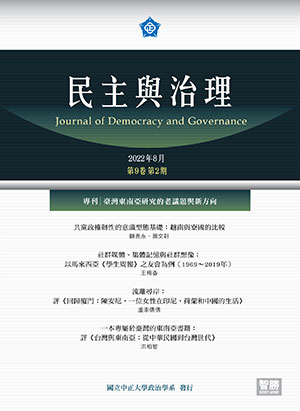Hot News
| 中文篇名 |
社群媒體、集體記憶與社群想像:以馬來西亞《學生周報》之友會為例(1969 ~ 2019 年) | |
|---|---|---|
| 英文篇名 |
Social Media, Collective Memory and Community Imagination: On Malaysia Student Weekly Youth’s Club (1969-2019) | |
| 作者 | ||
| 中文摘要 |
本文主要探究冷戰時期馬來西亞學生組織「《學生周報》之友會」(以下簡稱學友會),歷經解散半世紀後,何以在後冷戰時期仍然持續維繫社群?進一步說明社群媒體與集體記憶之間的運作機制。透過初級資料非正式訪談的田野筆記,以及次級資料報紙和網路部落格資料,分析 1955 年成立的學友會,透過各階段不同的記憶載具維繫社群。首先,學友會的社群想像區分為兩個層次:一是奠基於學友們年輕歲月的集體記憶,日後透過各種正式╱非正式聚會,重新召喚此種懷舊的集體情緒;二是透過社群媒體,包括部落格的「記憶階級化」現象,以及 WhatsApp訊息、影像和圖片的交流,學友社群建構對於過去、現在和未來的社群想像。其次,社群媒體的發展促使學友會在虛擬空間繼續凝聚,讓學友們得以游移於真實空間和虛擬空間,真實空間培養的情誼在虛擬空間延續,虛擬空間結識的新學友,在真實空間相聚,透過虛實空間的轉換,讓學友會得以延續。最後,在實體空間和虛擬空間之間,社群想像背後所呈現的階級性和種族化,以及建構在語言階序、文化階序和日常國族性的記憶,促使學友社群的想像得以可能。 | |
| 英文摘要 |
This article mainly explores the Malayan Student Organization “Student Weekly Youth’s Club” (Youth’s Club) during the Cold War. After half a century since its dissolution, why does it continue to maintain community operations in the post-Cold War period? This research further examines the operation mechanisms between the social media and collective memory. Through informal interview material of primary data, as well as written and online blog data of secondary data, the article analyzes how the Youth’s Club has modified the community imagination at each stage by means of different ways. The research argues that the community imagination of the Youth’s Club can be divided into two phases: First, it is based on the collective memories of the early years, which was strengthened through various formal/informal gatherings which recalled this nostalgic collective emotion. In addition, through social media, including the phenomenon of “memory stratification” of blogs, the exchange of messages, images and pictures on WhatsApp, the Youth’s Club has constructed the imagination of the past, present and future communities. Secondly, the advancement of Internet technology had allowed the Youth’s Club to continue to gather in virtual spaces, such as blogs, WhatsApp and other social media, allowing members of Youth’s Club to move between both the real space and the virtual space. New acquaintances are met in the real space, and through the conversion of the virtual and real space, the Youth’s Club is able to endure. Finally, the hidden meanings embedded in the physical and the virtual spaces, the class and racial characteristics presented by the community imagination, as well as the community memory intertwined with language/cultural hierarchy and every nationhood, make the advancement the community imagination of Youth’s Club possible. | |
| 關鍵詞 |
文化冷戰、日常國族性、友聯、媒介記憶、階序、cultural cold war、everyday nationhood、union press、media memory、hierarchy | |
| 刊名 | ||
| 期數 | ||
| 起訖頁 |
043-075 | |
| 出版單位 |
國立中正大學政治學系 | |
| DOI | ||
| QRCode |
| |
| 上一篇 | ||
| 下一篇 |



